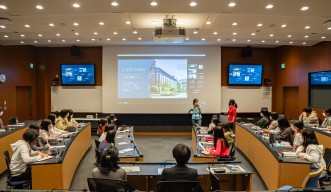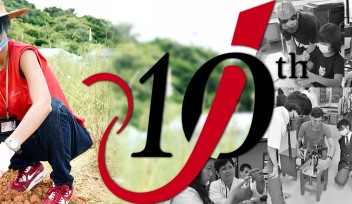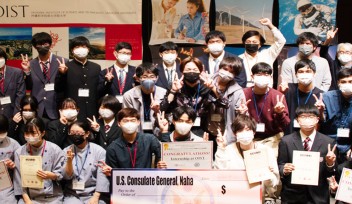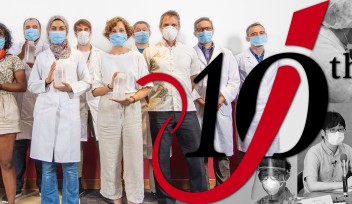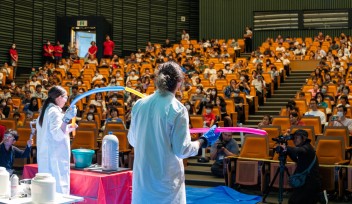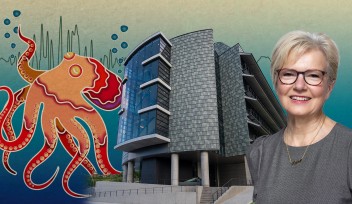Okinawan schoolgirls learn the science behind longevity at HiSci Lab 2022
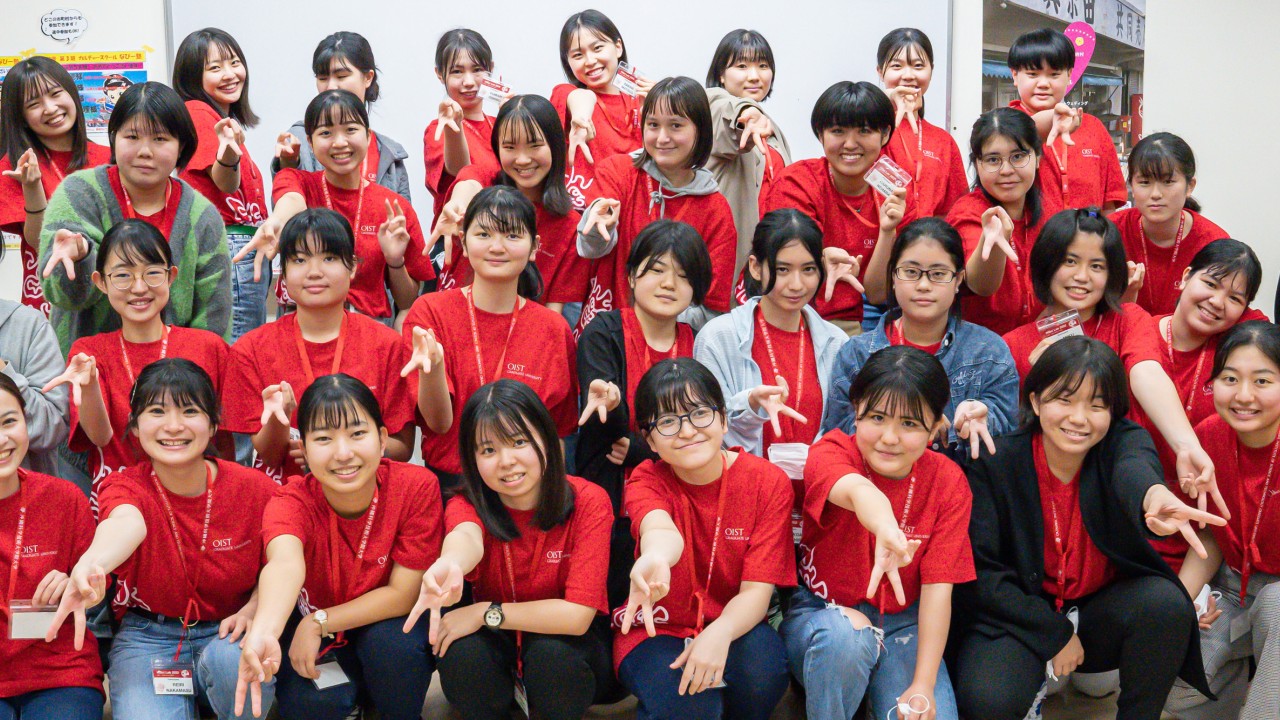
In March 2022, a group of 35 girls from high schools across Okinawa Prefecture participated in HiSci Lab – an annual workshop aimed at fostering their interest in STEM (Science, Technology, Engineering and Mathematics) topics.
The outreach event, which took place over two days on March 25th and 26th, was hosted by OIST and supported by the Okinawa Prefectural Government, with additional funding from the Tanaka Memorial Foundation. Three of the participants this year came from remote islands, with two joining from Ishigaki island and one from Kume island.
On the first day, four female scientists, three from OIST and one from the University of the Ryukyus, gave career talks. The researchers, each at different career stages ranging from PhD student to postdoctoral researcher to Associate Professor, shared personal stories about their successes, their struggles, and what originally motivated them to pursue science.
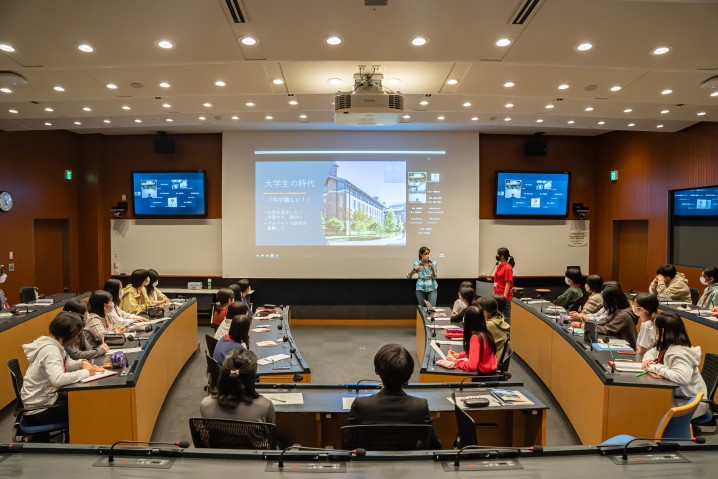
“A big part of the event is to inspire the girls to consider a career in science,“ said Meria Miller, one of the organizers and the Science Education Outreach Team Leader in the OIST Graduate School. “It’s a chance for them to connect with female researchers, ask questions and realize there is a future for them in STEM.”
On the second day, the students attended a series of lectures based on the theme of longevity.
“Last year, our theme was the ocean, and we wanted to keep on with themes that are deeply connected to Okinawa,” said Fangyi Tai, one of the organizers, and a staff member from the OIST Graduate School External Engagement Section. “For a long time, Okinawa has been known for the health and longevity of its residents and we wanted to explore the historical and scientific reasons behind this.”
The second day opened with a seminar from Dr. Takayuki Teruya, a technician in the OIST G0 Cell Unit. He explained to the students about his research, in which he looks at metabolic changes associated with ageing and ageing-related diseases.
Afterwards, the girls asked many questions about his research and career advice. He told them: “I want you to find out what you are interested in and study or investigate it in your own way. Don't worry if your interests change frequently. All experiences should be useful for your future.”
The day continued with a session on the most common diseases that people die from in the local village of Onna, compared to the rest of Okinawa and Japan, and was given by Jun Motomura, a Senior Associate Professor at the Graduate School of Nursing, Meio University in Nago.
The students analyzed and compared data, which showed that despite Okinawa’s reputation, people no longer lived longer than the rest of Japan – itself one of the top countries in the world for healthspan and lifespan.
Before lunch, the participants whet their appetite with a taste of OIST rice, which was developed by the OIST Plant Epigenetics Unit. Associate Professor Hidetoshi Saze, who is head of the unit, explained the importance of the OIST rice to the girls.
“The rice contains resistant starch, making it harder to digest. It may help to prevent diabetes and other metabolic diseases that are serious problems in Okinawa,” he said.
After lunch, the students learnt about shikuwasa – a fruit native to Okinawa that is believed to have numerous health benefits.
Finally, the day ended with a lecture and workshop on traditional Okinawan cuisine, run by the Total Wellness Project Okinawa. The girls learnt about the lifestyle of the inhabitants of the Ryukyuan islands and cooked and ate shimayasai – a dish made from locally grown vegetables.
During the two days, the girls were able to forge new friendships and explore new perspectives towards a uniquely Okinawan theme.
“In this program, I was not only able learn about longevity in Okinawa, but also had the valuable experience of interacting with students who are highly motivated by science and women who actually became researchers,” said one of the students in her anonymous feedback. “Through this program, I was strongly convinced that I want to pursue a career in science… Thank you for this valuable experience.”
For press enquiries:
Press Inquiry Form










